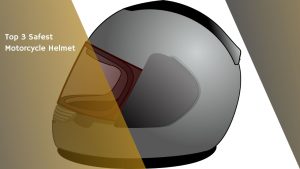Types of Refrigerant – What are the commonly used types of refrigerant that are used whether in household or industrial settings? Let’s dig in only at Dimulti.id!
After knowing and understanding the explanation of refrigerant in the previous article, now it’s time to dive into the different types of refrigerant.
So, without further ado, let’s check the explanation below!
Also Read
Table of Contents
Types of Refrigerants

Refrigerants have a very important role in cooling systems and air conditioning. The main function of this component is to absorb heat from the room and convert it to a cold comfortable temperature through the cooling cycle.
Not only that, the refrigerant also plays a role in regulating the pressure in the system.
When the refrigerant is in a gas state, the refrigerant will be compressed by the compressor and create a high pressure.
Then, the refrigerant is condensed into liquid through the condenser, thus able to lower the pressure. This process repeats over a cooling cycle to keep the system performing optimally.
There are different types of refrigerants that are used in the industry. Each type has different characteristics, properties, and performance. Let’s take a look at each of these types below.
1. Chlorofluorocarbons R12
R12, also known as chlorofluorocarbons (CFCs), was one of the kinds of refrigerants that were commonly used in air-conditioning systems in the past.
However, the use of R12 has been discontinued due to its negative impact on the environment.
Refrigerant R12, along with other types of CFCs, has the potential to damage the ozone layer and contribute to the greenhouse gas effect, which can have an adverse impact on human health and cause unwanted climate change.
In an effort to address this environmental problem, the use of R12 as a refrigerant in vehicles was discontinued.
This decision resulted in the cessation of production in 1994, and was replaced by more environmentally friendly refrigerants, such as hydrochlorofluorocarbons (HCFCs) and hydrofluorocarbons. (HFC).
This step is a response to awareness of the importance of protecting the ozone layer and reducing greenhouse gas emissions.
In the air conditioning and cooling industries, these changes also drive the development of safer and more efficient refrigerants, such as R410A and R134a, which have a much lower environmental impact.
The shift from R12 to a more environmentally friendly refrigerant is an important step in the effort to protect the environment and create a sustainable cooling system.
Awareness of the negative impact of refrigerants on the environment is on the rise, and experts and industry are working together to develop better and environmentally-friendly solutions in the world of air conditioning and cooling systems.
Also Read: “5 Tips on How to Maintain an AC Compressor“
2. Hydrochlorofluorocarbons R22
Hydrochlorofluorocarbons (HCFCs) are a type of refrigerant often referred to as freons by professionals in the field of HVAC.
For decades, R22 has been a major component in the air conditioning system that supplies cold air.
However, like other refrigerants, R22 has some weaknesses, one of which is its negative impact on the environment, especially in terms of ozone depletion.
In order to protect the environment and mitigate the adverse impact of climate change, environmental regulations in the United States issued the Clean Air Act in 2010 which prohibits the use and production of R22. As a result, starting January 1, 2020, R22 production is stopped in the US.
It should be noted that even though R22 production has been stopped, it does not mean that the use of heat pumps or air cooling systems using R22 refrigerant is illegal. However, there are restrictions that apply.
After January 1, 2020, only R22 refrigerants that have been recycled, reclaimed, or recovered are allowed to be used.
It aims to promote the use of more environmentally friendly refrigerants and encourage recovery and recycling of existing materials.
Understanding these regulatory changes is important for owners and users of air conditioning systems that use R22.
It is important to find suitable alternative solutions and consider more environmentally friendly alternative refrigerant alternatives, such as R410A or R134a, to maintain optimal cooling system performance and support sustainable environmental protection efforts.
Also Read: “4 Tips on How to Maintain an Air Conditioner“
3. Hydrofluorocarbons (HFCs) R410a, R-32, R134a
Hydrofluorocarbons (HFCs) R410a, R-32, R134a are kinds of refrigerants that are commonly used in today’s air-conditioning systems.
HFCs, also known as purons, have become a substitute for the R22 refrigerant.
One example is R410a, which does not contain chlorine, which makes it more environmentally friendly.
Moreover, R420a has cooling characteristics similar to R22, making it a reliable choice for air conditioning systems.
The use of hydrofluorocarbons in air conditioning systems provides several significant benefits, including improved reliability, comfort, efficiency, and better air quality.
But, it is recommended that if you want to replace the R22 refrigerant with R410a or any other type of refrigerator, adjustments and upgrades to the existing system are required.
If you are looking for the best type of refrigerant for air conditioning in your home, R410a or puron is a top choice to consider.
In addition to its reliable performance, this coolant is also recognised for its minimal impact on the environment.
The explanation of the types of refrigerant is indeed an important information to know. But knowing the safety and quality of your AC unit is even more important!
Be sure to choose the one with the SNI logo on it as the SNI logo on an air conditioner is a testament that the product has already been tested and determined for its quality and safety aspects.
The SNI certification itself is a series of regulations to ensure that every product sold and distributed in Indonesia is within Indonesian standards.
This will not only give the Indonesian customers a peace of mind but also be beneficial for you, business owners.
As having the SNI logo on your products will boost the trust from the Indonesian market to your products!
So, if you’re a business owner and want to have a more boost to your product, kindly check this link!















